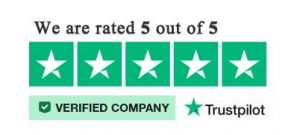Micro Nasdaq Futures vs. Mini Nasdaq Futures
Posted By:- Ilan Levy-Mayer Vice President, Cannon Trading Futures Blog

Micro and Mini Nasdaq futures are derivatives that track the performance of the Nasdaq 100 Index
Micro and Mini Nasdaq futures are derivatives that track the performance of the Nasdaq 100 Index, which comprises 100 of the largest non-financial companies listed on the Nasdaq stock exchange. These futures contracts allow traders and investors to speculate on the future direction of the technology-heavy Nasdaq 100 Index or hedge against their existing equity positions. While both micro and mini Nasdaq futures serve similar purposes, they cater to different segments of the market due to differences in contract sizes, leverage, and capital requirements.

Contract Sizes and Leverage
Mini Nasdaq Futures (NQ): The Mini Nasdaq futures, often referred to as “NQ,” are the more established and widely recognized of the two. Each NQ contract represents a financial commitment to 20 times the Nasdaq 100 Index. This means that the value of one mini Nasdaq futures contract is 20 times whatever the Nasdaq 100 Index is trading at. For example, if the Nasdaq 100 Index is at 13,500, the notional value of one mini Nasdaq futures contract would be $270,000 (13,500 x 20).
Each mini NASDAQ futures point is worth $20 in your favor or against you per contract.
Micro Nasdaq Futures (MNQ): Introduced more recently to provide access to the same markets at a reduced financial commitment, micro Nasdaq futures (MNQ) are one-tenth the size of their mini counterparts. Each MNQ contract represents a financial commitment to 2 times the Nasdaq 100 Index. Continuing with the previous example, if the Nasdaq 100 Index is at 13,500, the notional value of one micro Nasdaq futures contract would be $27,000 (13,500 x 2).
Each mini NASDAQ futures point is worth $2 in your favor or against you PER contract traded.
The smaller size of the micro Nasdaq futures results in lower margin requirements, making it a more accessible option for individual traders and those with smaller trading accounts. The leverage inherent in both contracts allows traders to control significant positions with a relatively small amount of capital. However, it’s crucial to understand that while leverage can amplify profits, it also increases the potential for losses.
Why Trade Micro Nasdaq Futures?
- Lower Capital Expenditure: The primary advantage of micro Nasdaq futures is their affordability due to lower capital requirements. This makes it feasible for smaller investors to enter futures markets, a domain that was traditionally dominated by larger institutional investors. Micro contracts allow traders to manage risk more effectively by not over-leveraging their positions.
- Overnight Margins and Swing Trading: Swing traders, who typically hold positions for several days or weeks, find micro Nasdaq futures particularly appealing due to smaller overnight margin requirements. Overnight margins—the amount of capital required to hold a position after the daily trading session ends—are significantly lower for micro contracts. This reduces the cost of carrying open positions overnight, making it a viable strategy for traders with limited capital who wish to exploit the market’s medium-term movements.
- Fine-Tuned Position Sizing: Micro futures enable traders to achieve more precise position sizing and risk management. Instead of being limited to the larger increments of capital commitment required by mini contracts, traders can adjust their exposure more gravely with micro contracts. This flexibility is crucial in tailoring trading strategies to individual risk tolerance and market conditions.
- Portfolio Diversification and Hedging: Both mini and micro Nasdaq futures can be used for hedging against existing portfolio risks. However, the micro contracts allow for more precise hedging of smaller portfolio sizes. This can be particularly beneficial for individual investors looking to mitigate specific risks without the need to engage in larger, more capital-intensive contracts.
Suitability for Smaller Investors
Micro Nasdaq futures are particularly suitable for smaller investors for several reasons. Firstly, the lower financial commitment required allows these investors to participate in futures trading with less risk of significant capital loss. Secondly, the ability to use leverage effectively but conservatively can help amplify returns on smaller price movements in the Nasdaq 100 Index, which might otherwise be inconsequential with less capital at stake.
Moreover, the growth in popularity of electronic trading platforms and the availability of extensive educational resources make it easier for individual investors to access and trade micro Nasdaq futures. This democratization of financial markets helps level the playing field between individual retail traders and institutional investors.
In summary, both mini and micro Nasdaq futures offer valuable opportunities ( and risks!) for different types of traders. While mini futures continue to be a staple for larger traders and institutions looking for significant market exposure, micro futures cater exceptionally well to individual traders focused on risk management, capital conservation, and tactical leverage. As the financial markets evolve, the introduction of products like micro Nasdaq futures underscores the industry’s move towards inclusivity and accessibility, enabling more people to participate in and benefit from futures trading.
Ready to start trading futures? Call US 1(800)454-9572 – Int’l (310)859-9572 email info@cannontrading.com and speak to one of our experienced, Series-3 licensed futures brokers and start your futures trading journey with Cannon Trading Company today.
Disclaimer – Trading Futures, Options on Futures, and retail off-exchange foreign currency transactions involves substantial risk of loss and is not suitable for all investors. Past performance is not indicative of future results. You should carefully consider whether trading is suitable for you in light of your circumstances, knowledge, and financial resources. You may lose all or more of your initial investment. Opinions, market data, and recommendations are subject to change at any time.
Important: Trading commodity futures and options involves a substantial risk of loss. The recommendations contained in this writing are of opinion only and do not guarantee any profits. This writing is for educational purposes. Past performances are not necessarily indicative of future results.
**This article has been generated with the help of AI Technology. It has been modified from the original draft for accuracy and compliance.
***@cannontrading on all socials.







